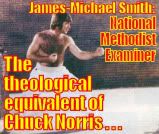9 Now when the Lamb opened the fifth seal, I saw under the altar the souls of those who had been slaughtered on acccount of the word of God and on account of the testimony they had given.
10 They cried out with a loud voice,
"How long, Sovereign Master, holy and true,
before you judge the ones living on the earth
and avenge our blood?"
11 Each of them was given a long white robe and they were told to rest for a little longer, until the full number was reached of both their fellow servants and their brothers and sisters who were destined to be killed just as they had been.
Last week we saw the contents of the first 4 seals of the Royal Decree that the Lamb began putting into effect. They were pretty bleak at first glance, but they were meant to warn Christians of the trials they had endured and would continue to experience. Jesus' Ascension and Heavenly enthronement set into motion God's Redemptive plan for the world. However, that plan included hardship for His People in a fallen world. They could take comfort in the fact that God is ultimately in control and has a plan that will result in the renewal and restoration of all creation. But until then, that creation will continue to groan in expectation (Rom.8).
But what about those Christians who had paid the ultimate price for their faith? What about those who had received no justice, but rather persecution? Would they go unnoticed by God? The 5th seal that is opened puts that question to rest decisively! When the Lamb opens it, he sees the souls of the martyred believers in Heaven. But this is no happy, harp-strumming, idyllic paradise. No, these saints are crying out to God for vindication. As the Hebrew imprecatory Psalms begged for God's judgment on those who were persecuting His people, so too these martyrs are longing for justice.
Even more interesting is where John sees these souls. They are "under the altar". The altar in the tabernacle/temple of old (which had been destroyed about 20 years prior to John's writing this) is where the atoning sacrifices were made for the sins of the people. When the animal was sacrificed, its blood would run down the altar to its base. The blood of the sacrifice was the necessary provision for the forgiveness of the people from their sins. It is likely that by seeing the souls of those who had literally shed their blood for the Lamb, who had shed His blood for all humanity, John is seeing that the deaths of the faithful are not pointless or in vain. Rather, in God's cosmic script, their deaths are somehow functioning in a sacrificial manner. Through their deaths, people will somehow be put right with God as they are convicted of bloodshed and turn in repentance to the ultimate sacrifice and ultimate high priest, the Lamb of God, Jesus.
This helps explain why they are given robes and told to wait a little longer. God's plan has yet to be fulfilled and there will be more who are called to give their lives for the sake of the Gospel. However, those deaths will not be in vain. Those martyrs will be given "white robes" (as symbol of conquering and victory) and will experience rest after having suffered so much on earth. They are now reigning with the Lamb in Heaven even though it looks like they are rotting in the ground on earth. But this is NOT their final destination. We will see more of them in later chapters of John's vision.
12 Then I looked when the Lamb opened the sixth seal, and a huge earthquake took place;
the sun became as black as sackcloth made of hair,
and the full moon became blood red;
13 and the stars in the sky fell to the earth like a fig tree dropping its
unripe figs when shaken by a fierce wind.
14 The sky was split apart like a scroll being rolled up,
and every mountain and island was moved from its place.
The Lamb now opens the 6th seal and unlike the previous one, there is a fierce display of Theophanic disasters. (Theophany is the term used to describe God's visible manifest appearance before humans in the Hebrew Bible; the prime example being His descent in smoke and fire and earthquake and thunder and lightning at Mt. Sinai!)
However, these aren't random "acts of God" in the meteorological sense of the term. These are actual images taken from the Hebrew Prophets which describe God's decisive judgment on evil that has manifested itself at various times throughout history:
"I will spread your flesh on the mountains
and fill the valleys with your remains.
I will drench the land with your flowing blood all the way to the mountains,
and the ravines will be filled with your flesh.
When I snuff you out,
I will cover the heavens
and darken their stars;
I will cover the sun with a cloud,
and the moon will not give its light.
All the shining lights in the heavens I will darken over you;
I will bring darkness over your land,
declares the Sovereign LORD."
Ezekiel 32:5-8 (God's judgment of Pharaoh and Egypt)
"Indeed the stars in the sky and their constellations
no longer give out their light;
the sun is darkened as soon as it rises,
and the moon does not shine.
---
So I will shake the heavens,
and the earth will shake loose from its foundation,
because of the fury of the LORD who commands armies,
in the day he vents his raging anger."
Isaiah 13:10, 13 (God's judgment of Babylon and its destruction)
"All the stars in the sky will fade away,
the sky will roll up like a scroll;
all its stars will wither,
like a leaf withers and falls from a vine
or a fig withers and falls from a tree."
Isaiah 34:4 (God's Final Judgment of the nations)
"I will show wonders in the heavens and on the earth,
blood and fire and billows of smoke.
The sun will be turned to darkness
and the moon to blood
before the coming of the great and dreadful day of the LORD."
Joel 2:30-31 (The Day of the LORD, which Peter quoted from at Pentacost)
The Prophetic imagery that John uses to describe the 6th seal's opening implies that the culmination of all of God's judgment on evil is about to happen. As is clear from the use of Isaiah's imagery of the sky rolling up and the stars falling like fig leaves, we are preparing for the Final Judgment; the eschatalogical "Day of the LORD". Evil has reigned throughout history, the faithful have been put to death time and time again, God's people have been pursecuted and have suffered...and now it's time for the divine retribution and for universal justice to prevail.
And all God's enemies immediately realize this...
15 Then the kings of the earth, the very important people, the generals, the rich, the powerful, and everyone, slave and free, hid themselves in the caves and among the rocks of the mountains. 16 They said to the mountains and to the rocks,
"Fall on us and hide us from the face of the one who is seated on the throne and from the wrath of the Lamb,
17 because the great day of their wrath has come,
and who is able to stand?!"
The cry of those seeking to hide from God's Judgment echoes the words of Malachi:
"But who can endure the day of his coming? Who can stand when he appears? For he will be like a refiner's fire or a launderer's soap."
Malachi 3:2
Who can stand? Who will be able to endure the wrath of God/the Lamb? (Note again the use of irony in Revelation. What could possibly be LESS full of wrath than a slain lamb?!) Before the Lamb opens the final seal, however, John is about to see the answer to that very question. And like the concept of "wrath" of the "Lamb", the image John encounters next will turn all notions of might and conquering upside down...
Until next time,
JMS






